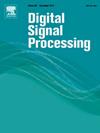VOLEMIA:使用时间谱卷积网络进行无创血压估计
IF 3
3区 工程技术
Q2 ENGINEERING, ELECTRICAL & ELECTRONIC
引用次数: 0
摘要
本文介绍了一种新的方法VOLEMIA,改进了光容积脉搏波(PPG)信号对血压(BP)的估计。现有文献通常依赖于长时间的PPG信号,这可能容易产生噪声,从而影响BP估计的性能。作为一种解决方案,VOLEMIA提出了PulseBlend Deconstructor (PBD),它将冗长的PPG信号分割成更短的片段,并将这些片段合并以提取抗噪声的PPG信号。此外,VOLEMIA提出了脉冲光谱提取器(PSA)机制,从PPG信号中提取脉冲频谱特征,因为频谱特征提供了收缩压(SBP)和舒张压(DBP)的相关线索。与现有方法不同,VOLEMIA将这些特征整合到一个先进的顺序深度学习框架中,同时还考虑了收缩压和舒张压之间的相关性。提出了一种新的复合损失函数,使网络既能学习单个BP特征又能学习相关BP特征,提高了网络性能。在我们新设计的DILPPG和公开可用的MIMIC-II数据集上的实验结果表明,VOLEMIA在这两个数据集上都比现有方法表现出更好的性能。此外,这表明VOLEMIA的关键组成部分,如PBD、PSA和复合损失函数,在性能提高中起着至关重要的作用。数据集链接:https://github.com/TrishnaSaikia/-DILPPG-Dataset.git本文章由计算机程序翻译,如有差异,请以英文原文为准。

VOLEMIA: Non-invasive blood pressure estimation using temporal-spectral convolutional network
This paper introduces a novel method, VOLEMIA, to improve blood pressure (BP) estimation from the photoplethysmography (PPG) signal. Existing literature has often relied on long-duration PPG signals, which can be noise-prone, thereby compromising the performance of BP estimation. As a solution, VOLEMIA presents the PulseBlend Deconstructor (PBD), which partitions the lengthy PPG signal into shorter segments and consolidates the segments to extract the noise-resilient PPG signal. Furthermore, VOLEMIA presents the Pulse Spectra Extractor (PSA) mechanism to extract pulsatile spectral features from the PPG signal because spectral features provide relevant cues for systolic BP (SBP) and diastolic BP (DBP). Unlike existing methods, VOLEMIA incorporates these features into an advanced sequential deep learning framework while also considering the correlation between SBP and DBP. A new composite loss function is proposed to enable the network to learn both individual and correlated BP features, enhancing performance. Experimental results on our newly designed DILPPG and publicly available MIMIC-II dataset demonstrate that VOLEMIA exhibits superior performance than the existing methods across both datasets. Also, it indicates that key components of VOLEMIA, like PBD, PSA, and composite loss function, play a crucial role in performance improvement. Dataset link: https://github.com/TrishnaSaikia/-DILPPG-Dataset.git
求助全文
通过发布文献求助,成功后即可免费获取论文全文。
去求助
来源期刊

Digital Signal Processing
工程技术-工程:电子与电气
CiteScore
5.30
自引率
17.20%
发文量
435
审稿时长
66 days
期刊介绍:
Digital Signal Processing: A Review Journal is one of the oldest and most established journals in the field of signal processing yet it aims to be the most innovative. The Journal invites top quality research articles at the frontiers of research in all aspects of signal processing. Our objective is to provide a platform for the publication of ground-breaking research in signal processing with both academic and industrial appeal.
The journal has a special emphasis on statistical signal processing methodology such as Bayesian signal processing, and encourages articles on emerging applications of signal processing such as:
• big data• machine learning• internet of things• information security• systems biology and computational biology,• financial time series analysis,• autonomous vehicles,• quantum computing,• neuromorphic engineering,• human-computer interaction and intelligent user interfaces,• environmental signal processing,• geophysical signal processing including seismic signal processing,• chemioinformatics and bioinformatics,• audio, visual and performance arts,• disaster management and prevention,• renewable energy,
 求助内容:
求助内容: 应助结果提醒方式:
应助结果提醒方式:


